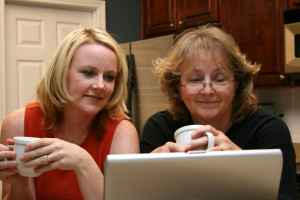The Chaos Potential
Trying to remember medicine schedules, dietary needs and restrictions, supplements, and medical and therapy appointments can be a difficult task in itself. Add the stress of long days of care, long nights, and the emotional, physical, and mental exhaustion of caregiving while trying to keep everything straight in your mind can be practically impossible. Whether medical professionals or physical (and other) therapists are coming into your home or if your loved one has a series of appointments to attend every week, it can be overwhelming to try to remember who needs what information. Then, when someone asks how they can help, the only way you can trust that they can tend to your loved one with confidence is knowing that they are armed with the most accurate and up-to-date information. Also in emergency situations, emotions and shock may cloud your memory.
Knowing What You Need to Know
Knowing what you need to know now, as well as what you might need in the future, is key to keeping medical and other crucial information organized. Save documents and notes from doctors and other medical professionals. Put appointments on your calendar as soon as they are scheduled. Having a basic list of fundamental information, even if you are sure you can remember it, is useful as volunteers come and go. The AARP has posted a list of items to include in a Personal Medical History file. The list includes the basics such as full name, date of birth, the blood type, and allergies. It also includes information about doctor visits, dates and types of surgeries, and test results.

Gathering Everything
As you get started gathering all the documents, you may find it useful to place papers, documents, receipts, business cards, and other physical data in a three-ring binder, using plastic page protectors or folders. Leave this binder in an easily accessible place in your loved one’s home.
Your Lotsa Community provides a Vital Information section to keep all of this medical information organized and accessible. To see your Vital Information section, log into your Lotsa Community and click on “Home.” The Vital Information section is available from the navigation bar on the home page. Here you can see and edit a range of topics concerning the most important information including personal basics, “favorites,” emergency contacts and medical care information. To put more information into a specific section, click on a section within Vital Information and click on “Add/Update.” You can customize this section any way you like.
You may also find it useful to keep a daily journal, especially if you and other caregivers are checking in on a loved one in their home on a regular basis. The journal may include medications given, any pain or complaints, and overall health for that day. When another caregiver stops by later that day or the next day, they will be informed with the most up-to-date information. The AARP also recommends keeping emergency contact information and addresses in this journal.
Providing Access
As you are gathering medical information, think about who needs to see it and who shouldn’t see it. Your Lotsa Community Vital Information section gives you complete control over who has access to specific information. By default, Basics and Favorites are viewable by everyone in the Community. Community coordinators can view all the other Vital Info sections.
To change privacy settings, click on a section within the Vital Information section and then click on “Permissions.” You can allow all members to see or edit each Vital Information section or you can choose an individual member or members to see or edit these sections. For instance, you may want certain volunteers who are going to doctor appointments or will be with your loved one for a long period of time to have access to this information. Or, you may want siblings to see financial records. Even if they aren’t a coordinator, you can add them under the Permissions of each Vital Information section. This will allow them to see, and even print, medications, health information, schedules, legal information, and more.
To see an example of how to use your Vital Information section, check out this webinar.
Ask for Help
Gathering medical information and organizing it both physically and digitally presents an efficient and easy way for others to help. When a close friend or family member asks, “What can I do to help?” you may want to offer this task. This frees you from yet another task and gets them involved in something that will help you both today and over the long term. In addition to medical information, the Alzheimer’s Association recommends that you gather legal documents such as living wills and powers of attorney. If you have a close friend or loved one who works in law, medical billing, or similar field, you may want to enlist their help in organizing these documents, both on and offline.

